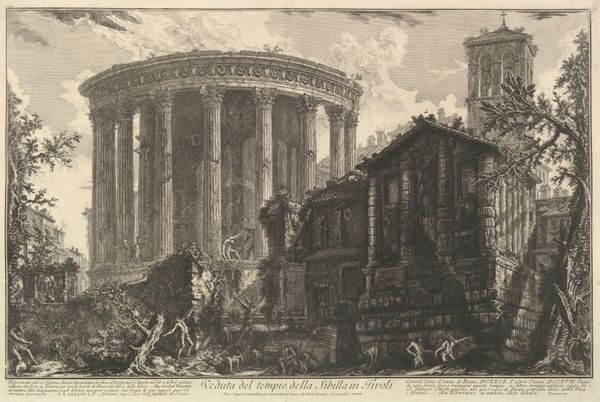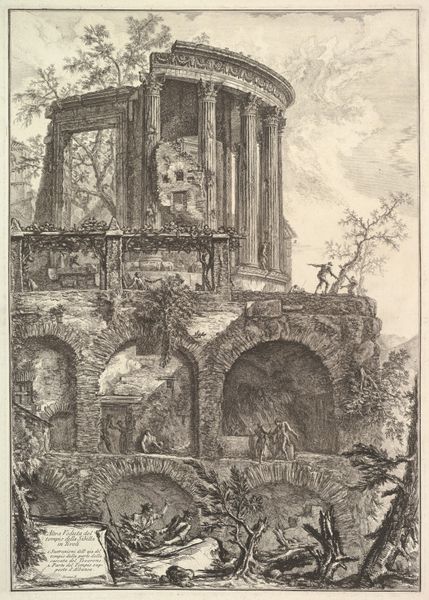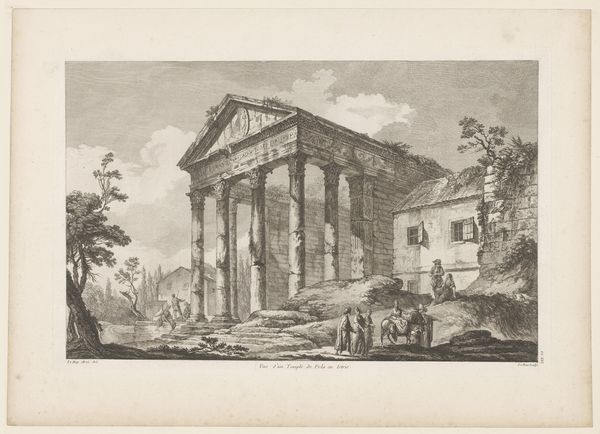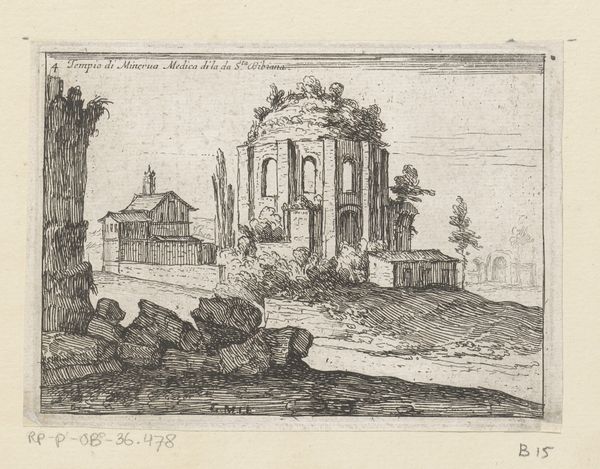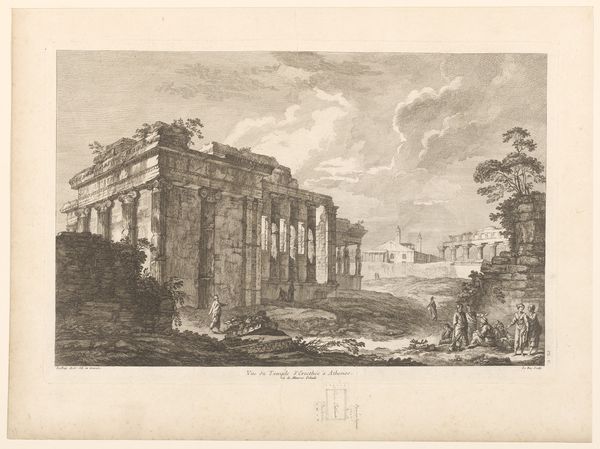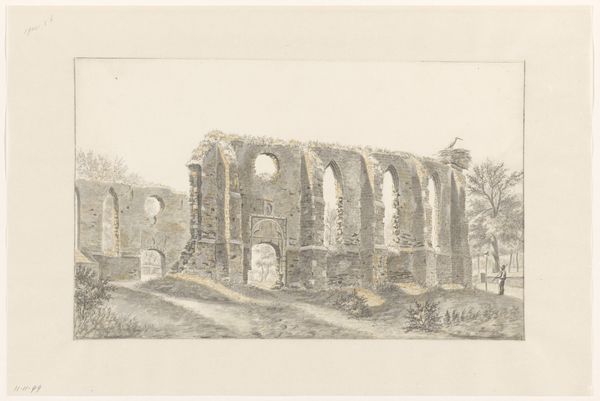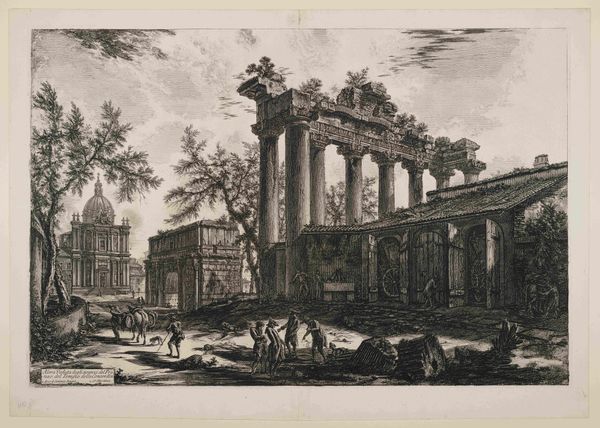
Temple of the Sibyl at Tivoli c. 18th century
0:00
0:00
print, etching
#
amateur sketch
#
toned paper
#
light pencil work
# print
#
etching
#
pencil sketch
#
incomplete sketchy
#
charcoal drawing
#
possibly oil pastel
#
carved into stone
#
italy
#
mixed medium
#
watercolor
Dimensions: 15 11/16 x 24 3/4 in. (39.85 x 62.87 cm) (plate)21 7/16 x 29 1/2 in. (54.45 x 74.93 cm) (sheet)
Copyright: Public Domain
Curator: This etching, entitled "Temple of the Sibyl at Tivoli," was created by Giovanni Battista Piranesi around the 18th century and is now part of the Minneapolis Institute of Art's collection. Editor: Right, well, I am immediately struck by this image's looming sense of decay. Nature is aggressively reclaiming these once-grand structures... it's really powerful and a little unsettling. Curator: Absolutely. Piranesi, renowned for his etchings of Roman antiquities, often highlighted the sublime and the inevitable decline of empires through his depictions of crumbling architecture overrun by nature. Think about what was going on with Europe's changing political and social systems in this period and how these ruins came to signify a need for people to find inspiration from the past. Editor: Sublime decay...I like that. And, looking closer, I’m captivated by the dramatic contrasts—the dark, brooding shadows against these almost luminous architectural forms. How did Piranesi create this mood, would you say? Curator: Piranesi employed a masterful etching technique, using cross-hatching and varying line weights to create a depth and texture that emulates the rugged surfaces of ancient ruins. There’s a level of meticulousness and deliberate artifice at play, influencing our feelings regarding these images to no end. Editor: So, not just a recording of the structure’s image? A political commentary? Curator: The temple here had an undeniable visual impact as well. By depicting the Temple of the Sibyl in Tivoli with such a dramatic interplay of light and shadow, Piranesi arguably wasn't just showing it; he was shaping the idea of ancient grandeur itself. Editor: Fascinating. And so it remains with us. I'm left contemplating the fragility of human achievements. This little print prompts so many profound reflections. Curator: Precisely! I am left in admiration of the lasting impact of an image produced during a time of upheaval and change on our perspectives of art, architecture, and the very real politics of beauty in our everyday experiences.
Comments
No comments
Be the first to comment and join the conversation on the ultimate creative platform.
